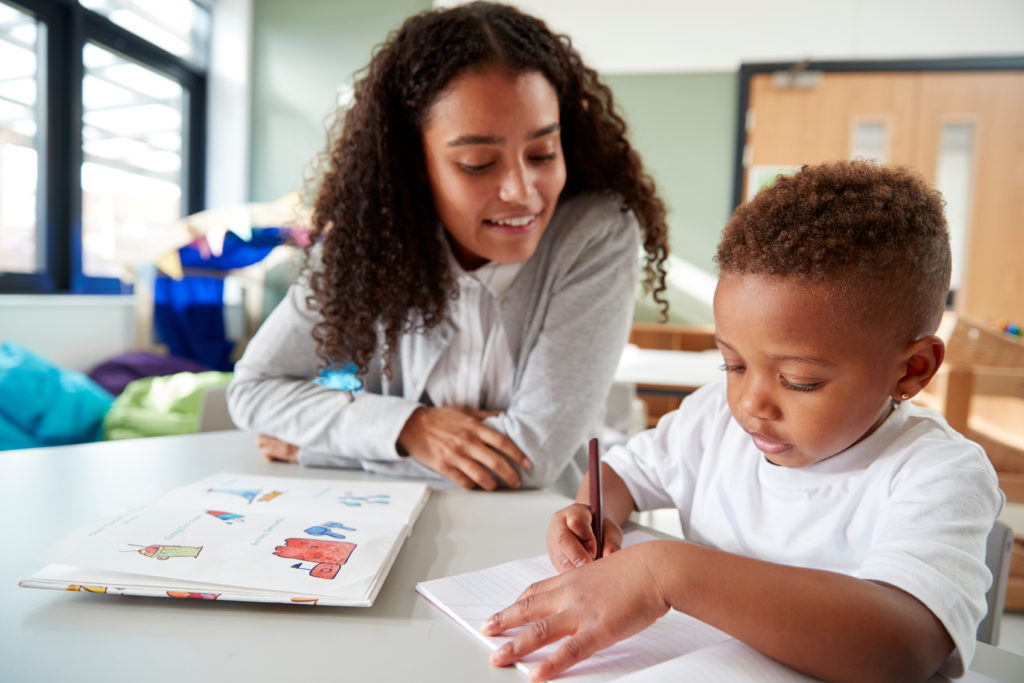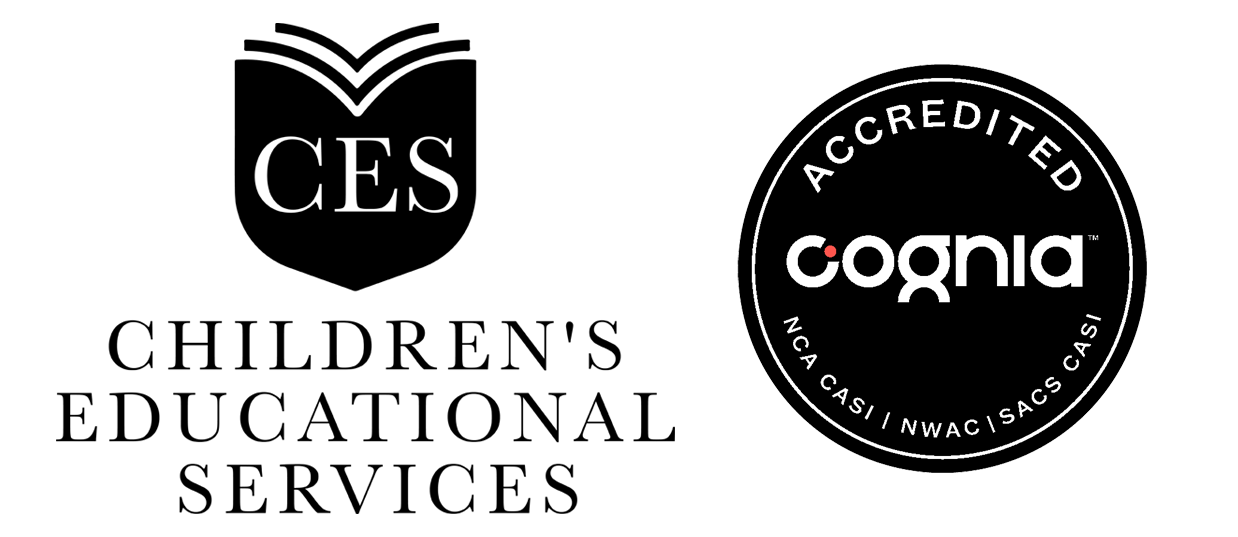It is inevitable that you will have the opportunity (and pleasure) of working with special needs students in your classroom. You may need to make accommodations for some and modifications for others. Providing for the needs of special education students will certainly be one of your greatest challenges as a professional educator. Consider these tips and strategies.
Students with Learning Disabilities
Learning disabled students are those who demonstrate a significant discrepancy, which is not the result of some other handicap, between academic achievement and intellectual abilities in one or more of the areas of oral expression, listening comprehension, written expression, basic reading skills, reading comprehension, mathematical calculation, mathematics reasoning, or spelling.
Following is a list of some of the common indicators of learning disabled students. These traits are usually not isolated ones; rather, they appear in varying degrees and amounts in most learning disabled students. A learning disabled student …
- Has poor auditory memory—both short term and long term.
- Has a low tolerance level and a high frustration level.
- Has a weak or poor self-esteem.
- Is easily distractible.
- Finds it difficult, if not impossible, to stay on task for extended periods of time.
- Is spontaneous in expression; often cannot control emotions.
- Is easily confused.
- Is verbally demanding.
- Has some difficulty in working with others in small or large group settings.
- Has difficulty in following complicated directions or remembering directions for extended periods of time.
- Has coordination problems with both large and small muscle groups.
- Has inflexibility of thought; is difficult to persuade otherwise.
- Has poor handwriting skills.
- Has a poor concept of time.
Teaching learning disabled youngsters will present you with some unique and distinctive challenges. Not only will these students demand more of your time and patience; so, too, will they require specialized instructional strategies in a structured environment that supports and enhances their learning potential. It is important to remember that learning disabled students are not students who are incapacitated or unable to learn; rather, they need differentiated instruction tailored to their distinctive learning abilities. Use these appropriate strategies with learning disabled students:
- Provide oral instruction for students with reading disabilities. Present tests and reading materials in an oral format so the assessment is not unduly influenced by lack of reading ability.
- Provide learning disabled students with frequent progress checks. Let them know how well they are progressing toward an individual or class goal.
- Give immediate feedback to learning disabled students. They need to see quickly the relationship between what was taught and what was learned.
- Make activities concise and short, whenever possible. Long, drawn-out projects are particularly frustrating for a learning disabled child.
- Learning disabled youngsters have difficulty learning abstract terms and concepts. Whenever possible, provide them with concrete objects and events—items they can touch, hear, smell, etc.
- Learning disabled students need and should get lots of specific praise. Instead of just saying, “You did well,” or “I like your work,” be sure you provide specific praising comments that link the activity directly with the recognition; for example, “I was particularly pleased by the way in which you organized the rock collection for Karin and Miranda.”
- When necessary, plan to repeat instructions or offer information in both written and verbal formats. Again, it is vitally necessary that learning disabled children utilize as many of their sensory modalities as possible.
- Encourage cooperative learning activities (see Teaching with Cooperative Learning) when possible. Invite students of varying abilities to work together on a specific project or toward a common goal. Create an atmosphere in which a true “community of learners” is facilitated and enhanced.
Students Who Have Higher Ability
Students of high ability, often referred to as gifted students, present a unique challenge to teachers. They are often the first ones done with an assignment or those who continually ask for more creative and interesting work. They need exciting activities and energizing projects that offer a creative curriculum within the framework of the regular classroom program.
Characteristics of Gifted Students
Gifted students exhibit several common characteristics, as outlined in the following list. As in the case of learning disabled students, giftedness usually means a combination of factors in varying degrees and amounts. A gifted student …
- Has a high level of curiosity.
- Has a well-developed imagination.
- Often gives uncommon responses to common queries.
- Can remember and retain a great deal of information.
- Can not only pose original solutions to common problems but can also pose original problems, too.
- Has the ability to concentrate on a problem or issue for extended periods of time.
- Is capable of comprehending complex concepts.
- Is well organized.
- Is excited about learning new facts and concepts.
- Is often an independent learner.
Teaching Gifted Students
If there’s one constant about gifted students it’s the fact that they’re full of questions (and full of answers). They’re also imbued with a sense of inquisitiveness. Providing for their instructional needs is not an easy task and will certainly extend you to the full limits of your own creativity and inventiveness. Keep some of these instructional strategies in mind:
- Allow gifted students to design and follow through on self-initiated projects. Have them pursue questions of their own choosing.
- Provide gifted students with lots of open-ended activities—activities for which there are no right or wrong answers or any preconceived notions.
- Keep the emphasis on divergent thinking—helping gifted students focus on many possibilities rather than any set of predetermined answers.
- Provide opportunities for gifted youngsters to engage in active problem-solving. Be sure the problems assigned are not those for which you have already established appropriate answers but rather those that will allow gifted students to arrive at their own conclusions.
- Encourage gifted students to take on leadership roles that enhance portions of the classroom program (Note: gifted students are often socially immature.)
- Provide numerous opportunities for gifted students to read extensively about subjects that interest them. Work closely with the school librarian and public librarian to select and provide trade books in keeping with students’ interests.
- Provide numerous long-term and ex-tended activities that allow gifted students the opportunity to engage in a learning project over an extended period of time.
Students Who Have Hearing Impairments
Secondary Thoughts
Other students can be responsible for taking notes (on a rotating basis) for a hearing impaired student.
Hearing impairment may range from mildly impaired to total deafness. Although it is unlikely that you will have any deaf students in your classroom, it is quite possible that you will have one or more who will need to wear one or two hearing aids. Here are some teaching strategies:
- Provide written or pictorial directions.
- Physically act out the steps for an activity. You or one of the other students in the class can do this.
- Seat a hearing impaired child in the front of the classroom and in a place where he or she has a good field of vision of both you and the chalkboard.
- Many hearing impaired youngsters have been taught to read lips. When addressing the class, be sure to enunciate your words (but don’t overdo it) and look directly at the hearing impaired student or in his or her general direction.
- Provide a variety of multisensory experiences for students. Allow students to capitalize on their other learning modalities.
- It may be necessary to wait longer than usual for a response from a hearing impaired student. Be patient.
- Whenever possible, use lots of concrete objects such as models, diagrams, realia, samples, and the like. Try to demonstrate what you are saying by using touchable items.
Students Who Have Visual Impairments
All students exhibit different levels of visual acuity. However, it is quite likely that you will have students whose vision is severely hampered or restricted. These students may need to wear special glasses and require the use of special equipment. Although it is unlikely that you will have a blind student in your classroom, it is conceivable that you will need to provide a modified instructional plan for visually limited students. Consider these tips:
- Tape-record portions of textbooks, trade books, and other printed materials so students can listen (with earphones) to an oral presentation of necessary material.
- When using the chalkboard, use white chalk and bold lines. Also, be sure to say out loud whatever you write on the chalkboard.
- As with hearing impaired student, it is important to seat the visually impaired student close to the main instructional area.
- Provide clear oral instructions.
- Be aware of any terminology you may use that would demand visual acuity the student is not capable of. For example, phrases such as “over there” and “like that one” would be inappropriate.
- Partner the student with other students who can assist or help.
Students Who Have Physical Impairments
Physically challenged students include those who require the aid of a wheelchair, canes, walkers, braces, crutches, or other physical aids for getting around. As with other impairments, these youngsters’ exceptionalities may range from severe to mild and may be the result of one or more factors. What is of primary importance is the fact that these students are no different intellectually than the more mobile students in your classroom. Here are some techniques to remember:
- Be sure there is adequate access to all parts of the classroom. Keep aisles between desks clear, and provide sufficient space around demonstration tables and other apparatus for physically disabled students to maneuver.
- Encourage students to participate in all activities to the fullest extent possible.
- Establish a rotating series of “helpers” to assist any physically disabled students in moving about the room. Students often enjoy this responsibility and the opportunity to assist whenever necessary.
- Focus on the intellectual investment in an activity. That is, help the child use his or her problem-solving abilities and thinking skills in completing an assignment without regard to his or her ability to get to an area that requires object manipulation.
- When designing an activity or constructing necessary equipment, be on the lookout for alternative methods of display, manipulation, or presentation.
- Physically impaired students will, quite naturally, be frustrated at not being able to do everything the other students can accomplish. Be sure to take some time periodically to talk with those students and help them get their feelings and/or frustrations out in the open. Help the child understand that those feelings are natural but also that they need to be discussed periodically.
Students Who Have Emotional Problems
Students with emotional problems are those who demonstrate an inability to build or maintain satisfactory interpersonal relationships, develop physical symptoms or fears associated with personal or school problems, exhibit a pervasive mood of unhappiness under normal circumstances, or show inappropriate types of behavior under normal circumstances.
Although you will certainly not be expected to remediate all the emotional difficulties of students, you need to understand that you can and do have a positive impact on students’ ability to seek solutions and work in concert with those trying to help them. Here are some guidelines for your classroom:
- Whenever possible, give the student a sense of responsibility. Put the student in charge of something (operating an overhead projector, cleaning the classroom aquarium, re-potting a plant), and be sure to recognize the effort the student put into completing the assigned task.
- Provide opportunities for the student to self-select an activity or two he or she would like to pursue independently. Invite the student to share his or her findings or discoveries with the rest of the class.
- Get the student involved in activities with other students—particularly those students who can serve as good role models for the child. It is important that the emotionally disturbed child has opportunities to interact with fellow students who can provide appropriate behavioral guidelines through their actions.
- Discuss appropriate classroom behavior at frequent intervals. Don’t expect students to remember in May all the classroom rules that were established in September. Provide “refresher courses” on expected behavior throughout the year.
- Emotionally disabled students benefit from a highly structured program—one in which the sequence of activities and procedures is constant and stable. You will certainly want to consider a varied academic program for all your students, but you will also want to think about an internal structure that provides the support emotionally impaired youngsters need.
- Be sure to seat an emotionally impaired child away from any distractions (highly verbal students, equipment, tools, etc.).
- Whenever possible, keep the activities short and quick. Provide immediate feedback, reinforcement, and a sufficient amount of praise.
Students Who Have ADHD
Students with Attention-Deficit/Hyperactivity Disorder (ADHD) offer significant and often perplexing challenges for many teachers. However, it is interesting to note that the IDEA’s definition of students with disabilities does not include students with ADHD. For this reason, ADHD students are not eligible for services under IDEA unless they fall into other disability categories (hearing impairment, learning disability, etc.). However, they can receive services under Section 504 of the Rehabilitation Act of 1973.
ADHD students comprise approximately 3 to 5 percent of the school-age population. This may be as many as 35 million children under the age of 18. Significantly more boys than girls are affected, although reasons for this difference are not yet clear. Students with ADHD generally have difficulties with attention, hyperactivity, impulse control, emotional stability, or a combination of those factors.
As you consider this list of signs of ADHD, know that several of these traits must be present in combination before a diagnosis of ADHD can be made. A student who has ADHD …
Jabberwocky
Section 504 of the Rehabilitation Act of 1973 is a civil rights law requiring that institutions not discriminate against people with disabilities in any way if they want to receive federal funds. It requires that a school create a special plan to accommodate students’ learning needs. However, the law provides no funding to do so.
- Has difficulty following directions.
- Has difficulty playing quietly.
- Talks excessively.
- Fidgets or squirms when sitting.
- Blurts out things.
- Is easily distracted.
- Often engages in dangerous play without thinking about the consequences.
- Has difficulty awaiting turns.
- Interrupts or intrudes.
- Doesn’t seem to listen.
- Has difficulty paying attention.
- Has difficulty remaining seated.
- Often shifts from one activity to another.
When working with ADHD students in your classroom, keep the following in mind:
- Make your instructions brief and clear, and teach one step at a time.
- Be sure to make behavioral expectations clear.
- Carefully monitor work, especially when students move from one activity to another.
- Make frequent eye contact. Interestingly, students in the second row are more focused then those in the first.
- Adjust work time so it matches attention spans. Provide frequent breaks as necessary.
- Provide a quiet work area where students can move for better concentration.
- Establish and use a secret signal to let students know when they are off task or misbehaving.
- Use physical contact (a hand on the shoulder) to focus attention.
- Combine both visual and auditory information when giving directions.
- Ease transitions by providing cues and warnings.
- Teach relaxation techniques for longer work periods or tests.
- Each day be sure students have one task they can complete successfully.
- Limit the amount of homework.
- Whenever possible, break an assignment into manageable segments.
You are not alone when you’re working with special needs students. Often specialists, clinicians, and other experts are available in the school as part of an educational team. Included on the team may be special education teachers, diagnosticians, parents, social workers, representatives from community agencies, administrators, and other teachers. By working in concert and sharing ideas, you can provide a purposeful education plan for each special needs student.




